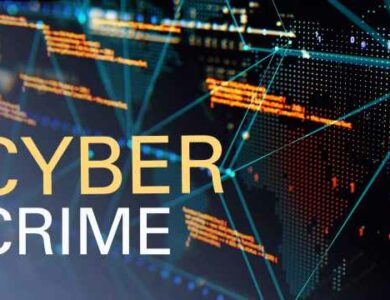Can You Trust Your Eyes? The Rise of Deepfakes and the Erosion of Truth

Imagine waking up one morning to find your face plastered across the internet, but the words coming out of your mouth are not your own. Not only are they false, but they are deeply damaging, capable of ripping apart your career and shattering your reputation. This is the chilling reality that actress Rashmika Mandanna faced when a deepfake video of her went viral, sparking outrage and highlighting the terrifying potential of this emerging technology.
Deepfakes are hyper-realistic synthetic media, often videos or audio recordings, that manipulate people’s likeness and voices to create deceptive content. In Rashmika’s case, the video showed her making offensive and vulgar remarks, completely fabricated to tarnish her image and reputation. The incident sent shockwaves through the film industry and beyond, raising serious concerns about the ethical implications of deepfakes and their potential to be used for malicious purposes.
But Rashmika’s case is just the tip of the iceberg. As the technology behind deepfakes becomes increasingly sophisticated and accessible, the potential for misuse grows exponentially. From spreading misinformation and manipulating elections to launching financial scams and inciting violence, the possibilities are endless, and the consequences potentially catastrophic.
This is not a dystopian science fiction novel; it is our reality. The line between truth and fiction is blurring, and the very fabric of our society is at risk. We need to wake up to the dangers of deepfakes and take action to mitigate the potential harm.
This article will delve into the unsettling world of deepfakes, exploring their technical aspects, the impact they can have, and the steps we can take to protect ourselves from this ever-present threat. Join me on this journey as we navigate the ethical minefield of deepfakes and fight to ensure that technology remains a force for good, not a harbinger of doom.
Imagine seeing a video of your favorite politician making outrageous statements, or hearing a voice recording of your boss saying something they never did. This is the unsettling reality of deepfakes.
What Makes Deepfakes So Scary?
Deepfakes are alarming because they are incredibly convincing and can be used for malicious purposes. Here’s why they’ve become such a hot-button issue:
- Uncannily realistic: Deepfakes leverage powerful artificial intelligence (AI) algorithms to learn and replicate facial expressions, speech patterns, and even mannerisms with remarkable accuracy. This makes it difficult to distinguish between real and fake content, especially for the untrained eye.
- Broad range of applications: Deepfakes can be used to spread misinformation, damage reputations, manipulate elections, launch financial scams, and even incite violence. The possibilities are endless and the potential damage immense.
- Easy accessibility: Creating deepfakes is becoming increasingly accessible. With the rise of free online tools and tutorials, even individuals with limited technical skills can produce convincing fake content. This democratization of deepfake technology further exacerbates the problem.
- Lack of regulation: Currently, there are no clear laws or regulations governing the use of deepfakes. This creates a legal gray area and makes it difficult to hold perpetrators accountable.
Protecting Yourself from the Deepfake Trap
While the threat of deepfakes is real, there are steps you can take to protect yourself:
- Be skeptical: Don’t believe everything you see or hear online. Question the source of the information and look for evidence of manipulation.
- Verify information: Use reliable sources to verify information before sharing it. Check the website or social media profile for authenticity and look for corroborating evidence.
- Beware of emotional triggers: Deepfakes often exploit emotions to make them more believable. Be wary of content that evokes strong emotions like anger, fear, or outrage.
- Use fact-checking tools: Several online tools can help you verify the authenticity of images and videos. Consider using these tools before sharing content.
- Be mindful of your online presence: Avoid sharing sensitive information online, such as your address or financial details. This information could be used to create more convincing deepfakes.
The Future of Deepfakes:
The technology behind deepfakes is rapidly evolving, making it even more challenging to distinguish between real and fake content. While the potential for misuse is significant, it’s important to remember that deepfakes also have the potential for positive uses. For example, they can be used in educational and artistic contexts, or to create personalized content.
The key to navigating the world of deepfakes lies in awareness and education. By understanding the technology and its potential dangers, we can take steps to protect ourselves and ensure that deepfakes are used for good, not for harm.
Deepfakes: A Call to Action
The emergence of deepfakes represents a pivotal moment in our technological evolution. It forces us to confront the challenges and opportunities that lie ahead and to re-evaluate our relationship with technology and information. We need to work together – individuals, governments, and tech companies alike – to develop ethical guidelines for the responsible use of deepfakes and mitigate the potential risks they pose.
https://hubliexpress.com/the-ultimate-weapon-against-cybercrime-pen-testing-for-a-safer-world/








